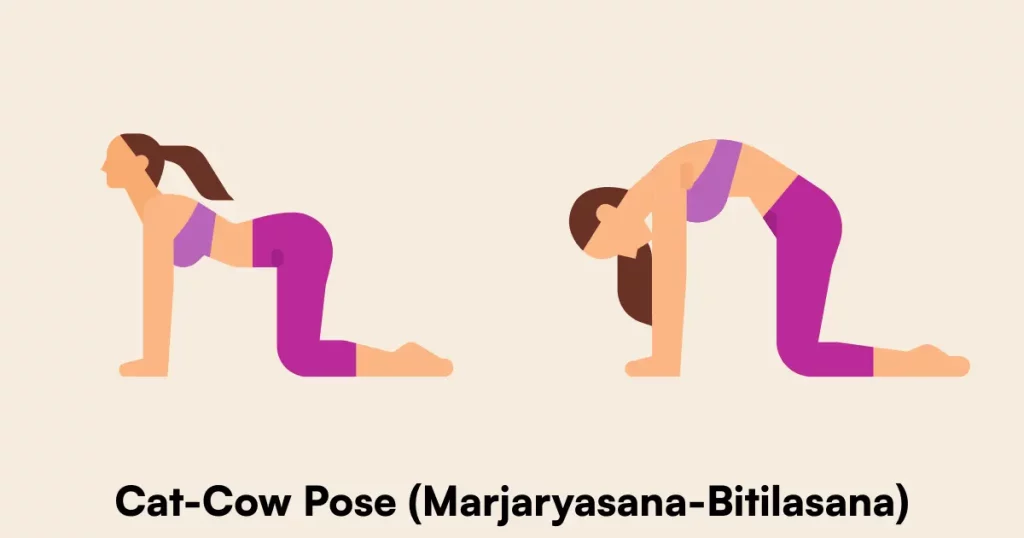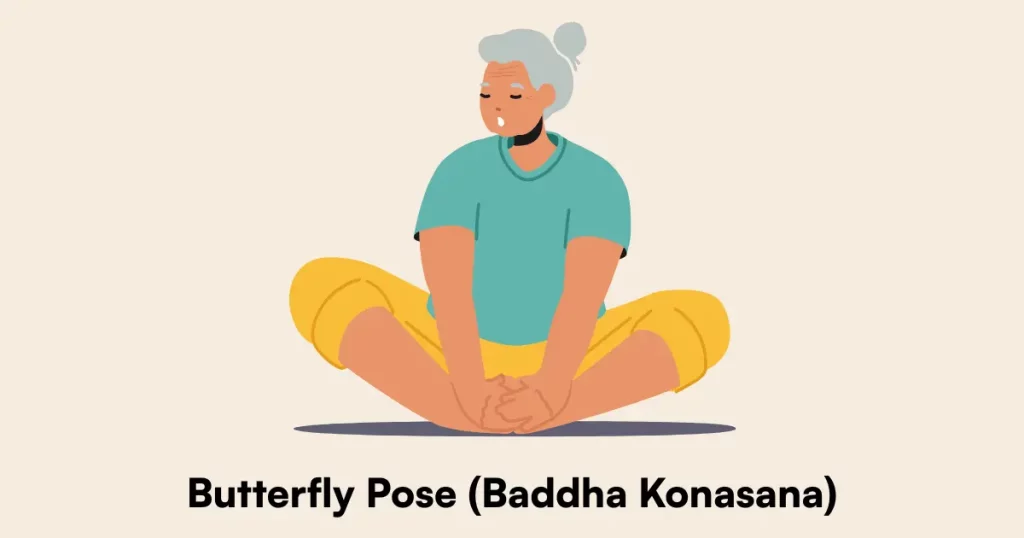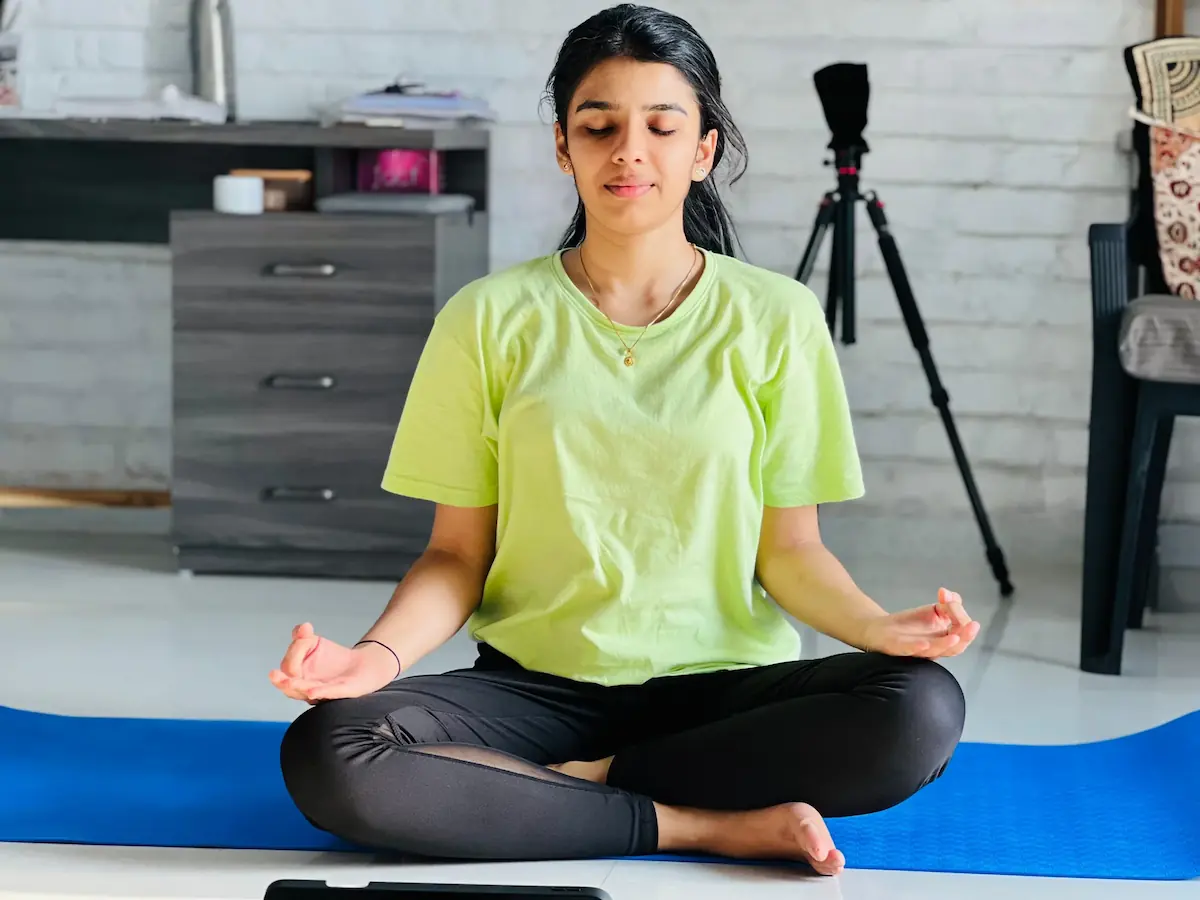Pregnancy is a beautiful journey of transformation physical, emotional, and spiritual. Amid doctor visits and daily to-dos, finding quiet moments to connect with your baby can feel rare. That’s where prenatal yoga steps in. It offers more than gentle stretches it nurtures emotional connection, deep breathing, and mindfulness between you and your growing baby.
Let’s explore how this calming practice can help you build a heart-to-heart bond with your baby even before birth.
Who Can Practice Prenatal Yoga and When to Begin
Who can do it?
Any pregnant woman with a low-risk pregnancy and approval from her healthcare provider.
Best time to start:
- Safest to begin after the first trimester (after 12–13 weeks).
- In the first trimester, focus on guided meditation and breathing rather than physical poses.

Read More: Yoga Is Not Just About Stretching – 9 Common Yoga Myths Busted
Step-by-Step Prenatal Yoga Routine to Connect with Baby
Sukhasana (Easy Pose) with Belly Breathing

How to do it:
- Sit cross-legged with your spine tall.
- Rest hands gently over your belly.
- Inhale slowly through your nose for 4 counts.
- Exhale gently for 6 counts.
Breathing cue:
Feel your breath nourishing your baby with each inhale. Whisper affirmations like “You are safe, you are loved.”
Benefits:
- Enhances oxygen flow to the baby
- Promotes emotional bonding
Marjaryasana-Bitilasana (Cat-Cow Pose)

How to do it
- Start on all fours, wrists under shoulders, knees under hips.
- Inhale: Arch your back, lift head and tailbone (Cow).
- Exhale: Round the back, tuck the chin (Cat).
- Repeat gently for 5–8 rounds.
Breathing cue:
Move with your breath; visualize your spine cradling your baby.
Modifications:
Use a blanket under knees for comfort.
Baddha Konasana (Butterfly Pose) with Affirmations

How to do it:
- Sit with soles of feet together, knees dropping outward.
- Hold your feet, lengthen the spine.
- Take deep breaths while gently flapping knees up and down.
Bonus Tip:
Place your hands on your belly and speak or hum softly. Use loving affirmations.
Precaution:
Avoid pushing knees down forcefully—stay gentle.
Balasana (Child’s Pose) with Visualization

How to do it:
- Kneel on the mat and bring your forehead to the ground.
- Extend arms forward or place them alongside the body.
- Focus on your breath and visualize your baby resting calmly in your womb.
Imagery cue:
Imagine your breath forming a golden light that wraps around your baby.
Ujjayi Breathing (Ocean Breath) in Seated Pose
How to do it:
- Inhale through your nose slowly.
- Exhale through your nose with a slight constriction in the throat, making a soft ocean sound.
Benefits:
- Calms the nervous system
- Reduces anxiety and emotional swings
Common Mistakes to Avoid
- Holding the breath (always maintain steady breathing)
- Overstretching or forcing movements
- Ignoring discomfort stop if you feel pain
- Practicing on a full stomach
Top Benefits of Daily Prenatal Yoga Practice
- Emotional Bonding: Encourages a nurturing connection with your baby.
- Reduced Stress: Lowers cortisol levels, creating a calm environment in the womb.
- Improved Birth Outcomes: Studies show better birth weight and lower preterm labor risks.
- Mental Clarity: Supports positive mood, emotional stability, and maternal confidence.
Tips for Beginners or High-Risk Pregnancies
- Always consult your OB-GYN before starting
- Practice near a wall or use props like cushions or bolsters
- Keep sessions short (10–20 mins) and consistent
- Stay hydrated and avoid overheating
- Skip advanced or inverted poses completely
Simple Weekly Routine Plan
Frequency:
2–3 times a week (or daily for 10–15 mins of meditation/breathwork)
Sample Routine:
- 3 mins Sukhasana + Belly Breathing
- 5 mins Cat-Cow
- 4 mins Butterfly Pose + Affirmations
- 5 mins Child’s Pose + Visualization
- 3 mins Ujjayi Breathing
Total: ~20 minutes
Read More: 10 Dynamic Yoga Poses to Add to Your Home Practice
FAQs: Prenatal Yoga & Bonding with Your Baby
Q1: Is prenatal yoga safe in all trimesters?
It’s best to start after 13 weeks. Stick to breathwork and meditation during the first trimester.
Q2: Can I do regular yoga instead of prenatal yoga?
Prenatal yoga is specially designed to accommodate your changing body and ensure baby safety.
Q3: How soon will I feel a stronger bond with my baby?
Many mothers feel emotionally connected within a few sessions, especially with breathwork and affirmations.
Q4: What if I’m not flexible?
No worries! Prenatal yoga is about awareness, not flexibility. Use props and stay gentle.
Final Thoughts: Yoga Is a Gentle Conversation Between You and Baby
Prenatal yoga isn’t just exercise it’s a sacred pause in your day to listen to the life growing inside you. Every breath you take and every movement you make sends a loving message to your baby: “I’m here, I care, and we’re in this together.”
Start slow, stay consistent, and remember bonding begins long before birth.

